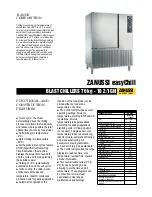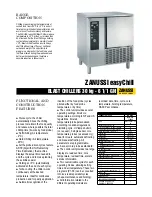
NEED HELP? 1-800-832-2966
22
To Maximize Product Life
Engine:
➢
Check oil level before each use and after every 8 hours of operation.
➢
Change oil after first 5-8 hours of operation. Change oil while engine is warm. Refill with new 10W-
30 oil, API rating SG, SH, SJ or better.
➢
Replace spark plug yearly or every 100 hours of operation.
➢
Service air cleaner regularly.
➢
Keep engine and machine parts clean.
➢
Check engine and equipment often for loose nuts and bolts, keep these items tightened.
Transmission:
➢
The tiller transmission is shipped from factory with the proper amount of oil. When replacing oil, the
tiller transmission holds 27-30 ounces. Do not overfill.
➢
Check the oil level annually. To check the oil level, move the tiller to level ground.
➢
Remove oil level dipstick located between the handlebar mounts on the transmission cover. If the
oil level is near or below the lower limit, fill the oil to recommended level with SAE 90W-140.
➢
Replace oil level dipstick in the filler hole.
➢
Note that the drive wheel transmission and rear tine transmission are one common reservoir.
When you add oil, you must wait a short period of time for the oil to flow rearward and equalize in
both front and rear to read the level properly.
Axle Shaft:
➢
Tip the tiller forward and secure it so it rests on the front guard.
➢
Lift the rear guard so the tines are exposed.
➢
Remove any accumulated material such as vegetation, string, wire, or other materials. Pay extra
attention to the area around the axle at the transmission housing. Any material/debris in this area
will damage the seals and shorten the life of the transmission.
➢
Lower the rear guard and return the tiller to the normal operating position.
Tires:
➢
Always check tire pressures before use and ensure the pressure is 25-30psi.
➢
If tire pressure is low, tube damage can result, as well as accelerated belt wear.
➢
If tire pressures do not match from side to side, the machine will pull to one side in use.
Engine should always be off with the spark plug wire disconnected for safety prior to beginning any repair or
maintenance on the machine.







































